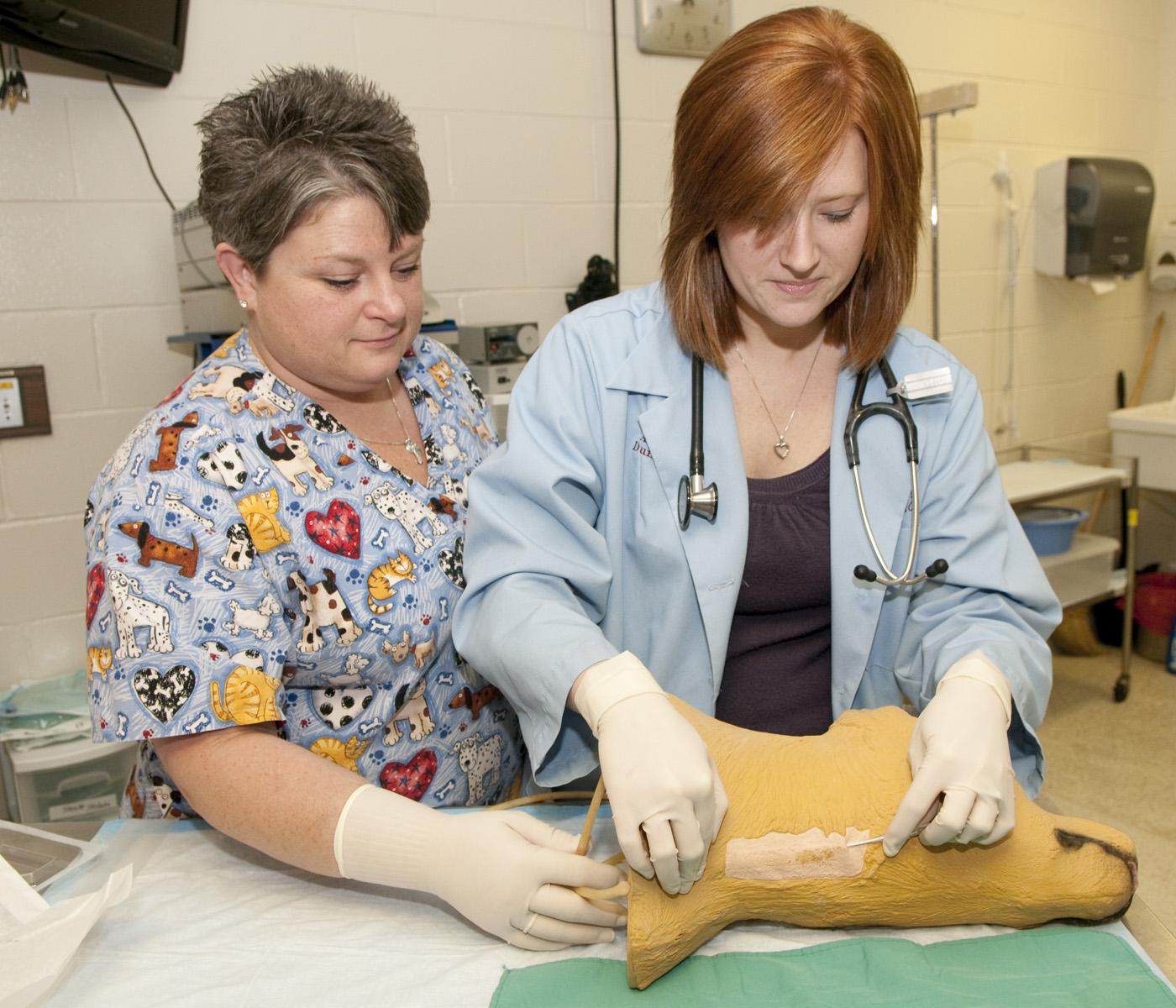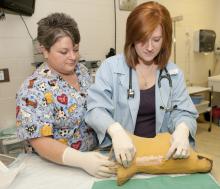Information Possibly Outdated
The information presented on this page was originally released on June 10, 2010. It may not be outdated, but please search our site for more current information. If you plan to quote or reference this information in a publication, please check with the Extension specialist or author before proceeding.
CVM pet care research can help human health
By Patti Drapala
MSU Ag Communications
MISSISSIPPI STATE – Researchers at Mississippi State University’s College of Veterinary Medicine investigate diseases and wellness strategies to improve pets’ lives, but many of their discoveries may ultimately advance human health care, too.
The college’s Small Animal Internal Medicine Research Program presents opportunities for veterinary staff to develop centers of excellence in specialty fields. It also prepares the next generation of clinicians, practitioners and researchers for careers on the frontiers of medicine and science. Advancements made in pet care are win-win situations for the veterinary profession and the public.
“We are a teaching institution, and the research we are conducting right now may not always be as extensive or in-depth as we would prefer,” said program coordinator Dr. Andrew Mackin, who holds the Hugh G. Ward Endowed Chair of Small Animal Veterinary Medicine. “It is the future research performed by the individuals we have trained that often turns out to be the most valuable.”
The program must have adequate funding, staffing and focus to survive. Mackin, a professor in CVM’s Department of Clinical Sciences and service chief of its Small Animal Internal Medicine unit, spearheads the search for grants and secures supplemental funding. He directs a high-caliber, interdepartmental team of clinicians, researchers and veterinary medical students who collaborate on projects about pet health.
One of the program’s current research projects involves evaluating the effects of cyclosporine, a drug that reduces the activity of the immune system, on dogs. Investigators are exploring different dosing regimens and examining the potential side effects of different treatments.
Researchers also are evaluating drugs used for treating blood disorders in dogs and cats. After reaching conclusions, many of them publish in professional journals, making vital information available to veterinary practitioners.
“One of our recently published studies documented our investigation of enoxaparin, a blood thinner used to prevent the formation of blood clots in dogs,” Mackin said. “Our study showed that the dosage routinely administered was likely to be ineffective. Doubling the dosage was more effective in preventing these problems.”
Researchers also are studying the effects of non-steroid pain relievers with anti-inflammatory properties in dogs, and the use of different formulations of slow-release insulin for treating diabetic cats. Results from this research could benefit humans who also have the diseases.
Some research projects may not be large in scope, but they also generate helpful information that may lead to practical or immediate application. Program researchers recently completed a limited study of hunting dogs exposed to gun-shot noise.
“According to our study, this exposure appeared to damage the dogs’ hearing capabilities,” Mackin said. “This evidence may open the door to further research on how to prevent hearing loss or establish safety standards for hunting dogs working in these conditions.”
Another project involved an artificial model of a dog to teach veterinary medical students how to successfully place intravenous catheters in canine patients.
“Rather than making major strides, we may take small steps to address small but important issues,” Mackin said. “A simple study can be immediately helpful.”
Funding for many of the program’s projects is through the Dr. Hugh G. Ward Endowment. The endowment provides the research program with discretionary funds to begin pilot studies and to purchase needed equipment and supplies for research, diagnosis, and treatment purposes.


